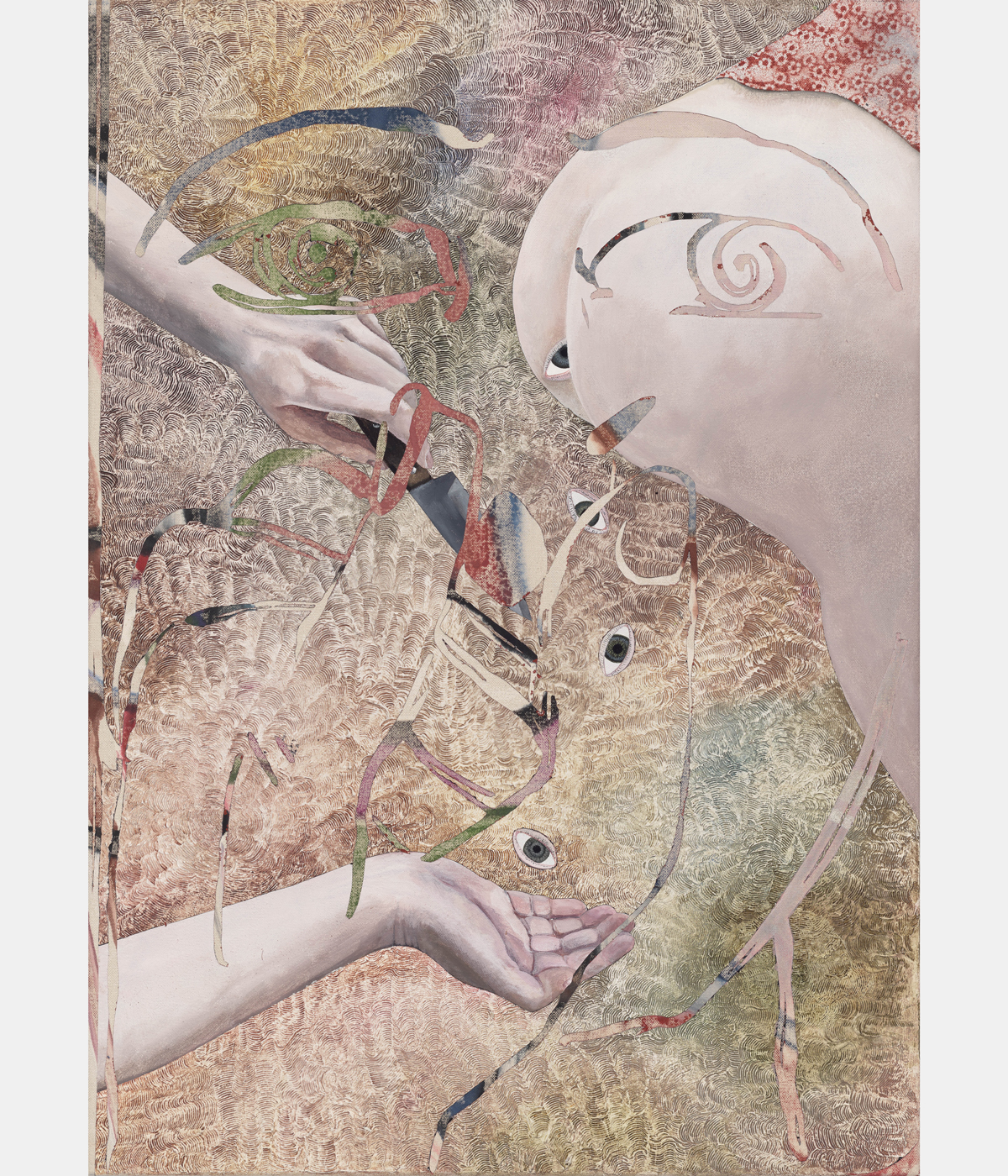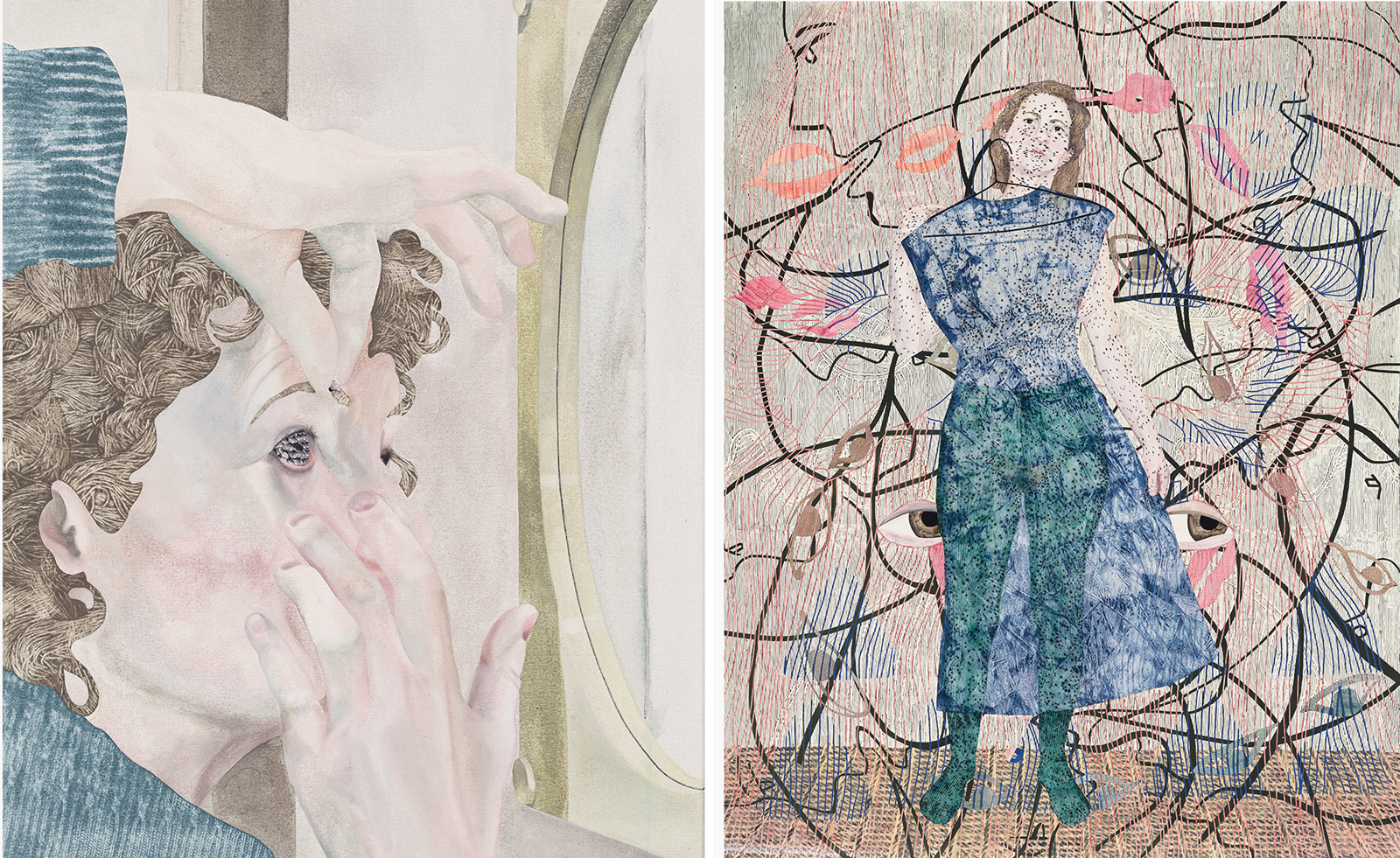
Helen Johnson’s ‘Opening’ at Pilar Corrias in London depicts surreal moments of bodily distortion and ablution in beguiling ways. The exhibition is inspired by Johnson’s own art therapy practice and her time spent as a patient in Lacanian psychoanalysis, which ended just before she began this complex body of work. ‘The way Jacques Lacan understands the unconscious, and people’s internal structures and neuroticness was useful to me in a therapeutic way,’ she says. ‘I wanted to take that field of knowledge on and integrate it with art therapy.’
The exhibition evokes the unnerving psychological and bodily intertwinement that runs through Lacanian theory and the dream world. Johnson’s paintings aren’t presented as simply horrific or beautiful, but as pure unconscious material, free from the value judgements of the conscious mind. In one painting near the entrance, a length of faeces is squeezed out of an anus into a giant squiggle. While viewers will quickly recognise what they’re looking at, the intricate detailing and soft palette are undeniably attractive. ‘There’s a repulsion, but the aesthetic draws you in,’ says Johnson.
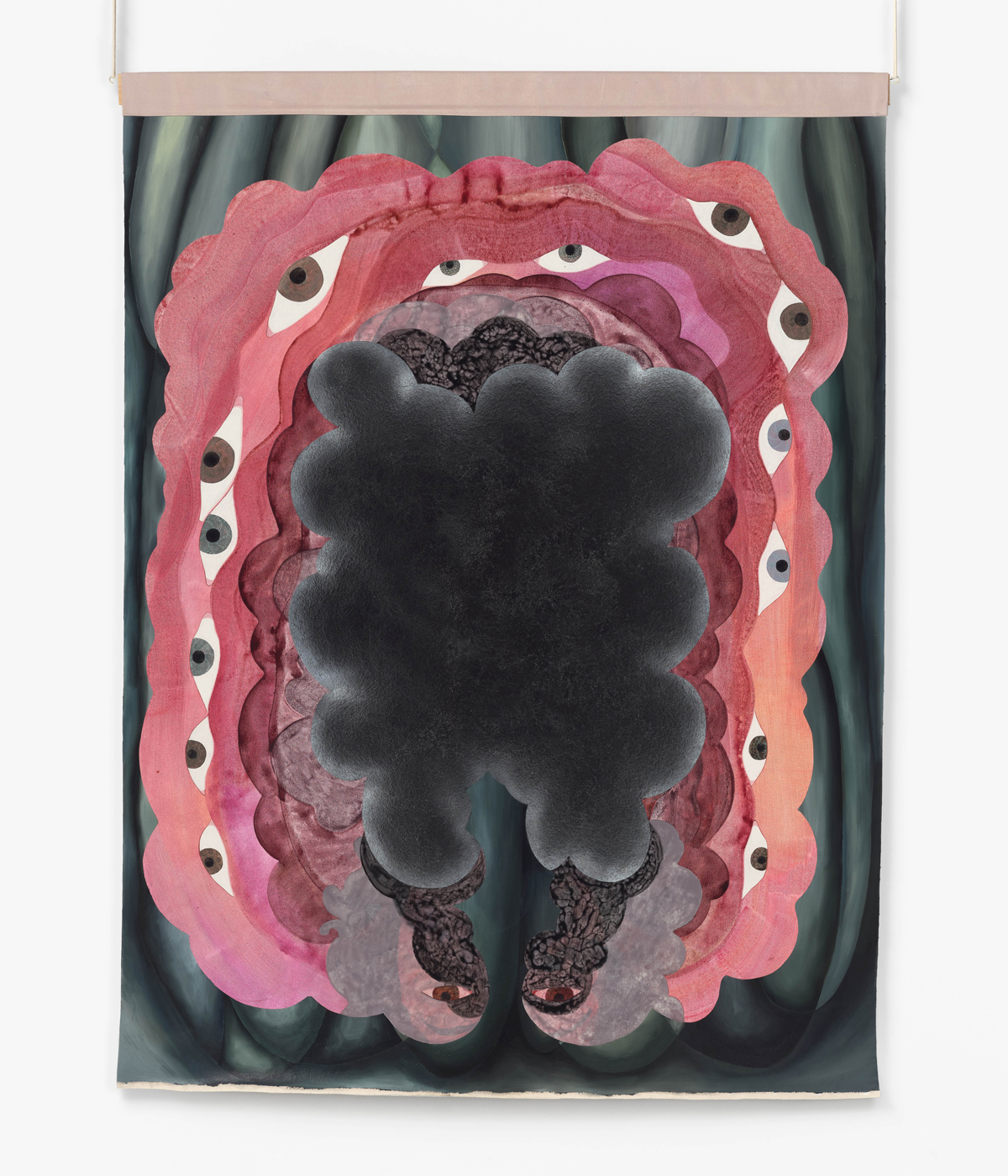
The works could be seen as living, breathing beings. Her images are painted onto loose hanging fabric, so they move and shift as the day progresses, reacting to people walking through the space and the changing humidity. There is a recurring motif of holes – in one painting, the artist is covered in small perforations – which break down the idea of a solid, impermeable body. Through its orifices things are let go, but invasion is also possible. ‘I’ve been thinking about what a body is on a physical level, but also a metaphysical level, which manifests in anxiety dreams,’ she says. ‘It might be teeth crumbling. I have one where I’m squeezing a pimple and toothpaste-like pus comes out. Our psychological conceptions of the body differ from how it exists in physical space.’
Eyeballs appear in various guises, as the organ that connects the mind and body; the vulnerable layer between internal and external; and a site of visceral gore. ‘The eyes have really insisted on themselves in this body of work,’ says the artist. ‘We’re such a visual species, it’s how you take in the world and project onto the world. They’re also a vulnerable occlusion, you know, birds peck out eyes!’
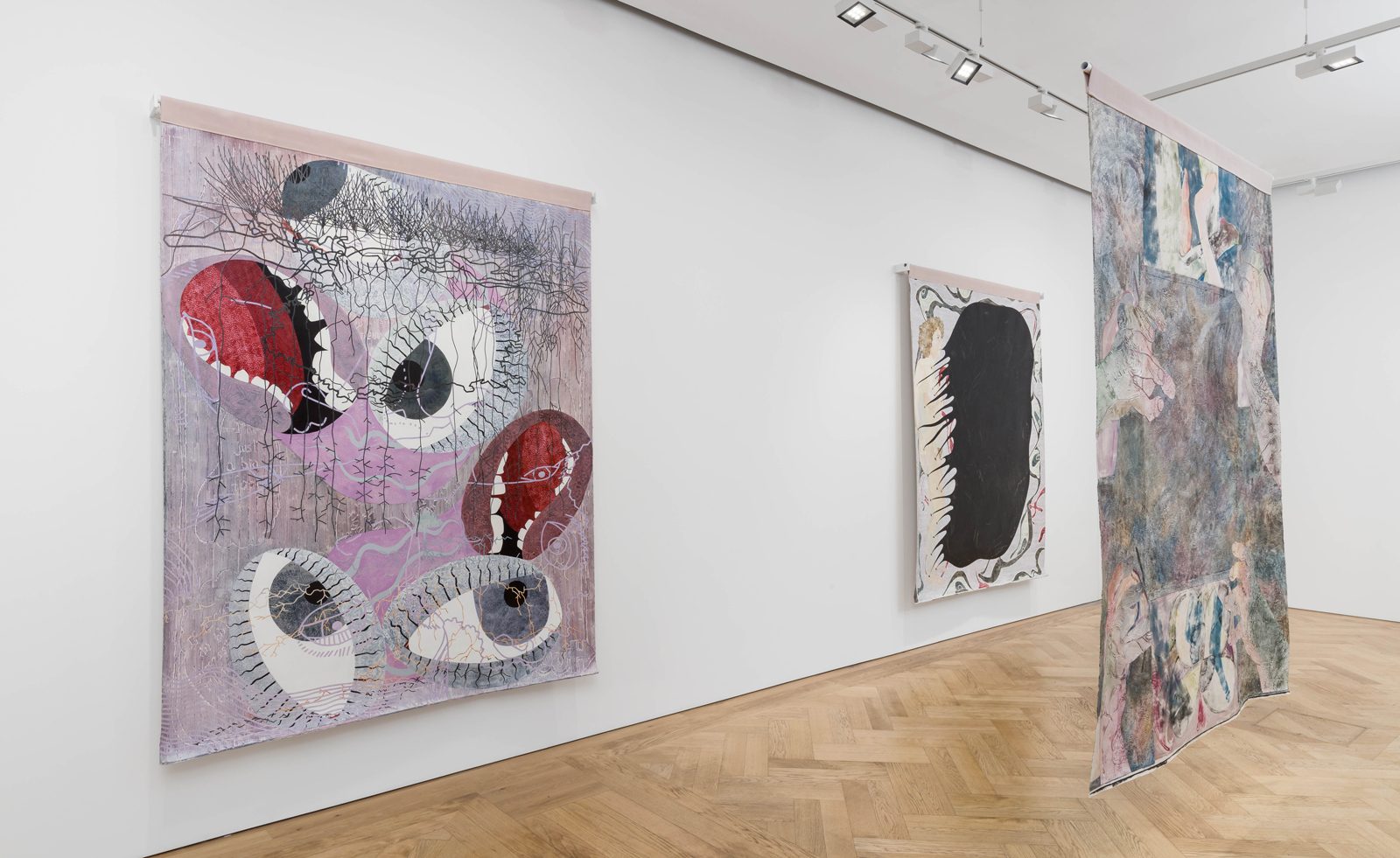
In one painting, eyeballs and disembodied mouths bob in water, inspired by pickled eggs floating in a jar. Elsewhere, a woman with eyeballs covered in scales prises the lid open to pluck them off. The painting evokes the Biblical phrase ‘when the scales fall from your eyes’ and reconnects with the violence it conveys. ‘I thought if you did have scales on your eyes, they wouldn’t fall out so readily. You’d have to pluck them out like contact lenses.’
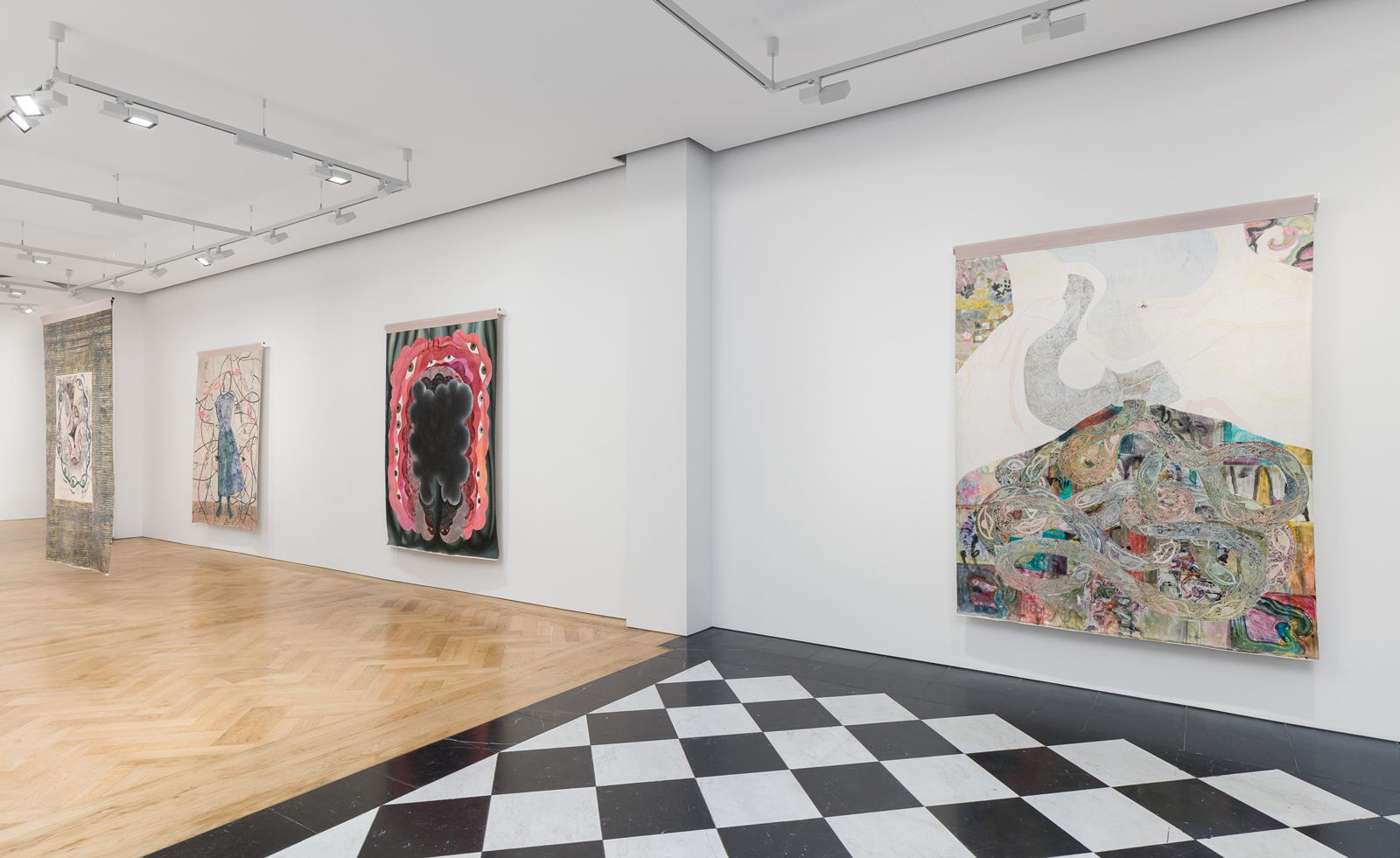
The artist hopes to capture authentic psychological moments, inspired by her art therapy practice. ‘Some of the people I work with have never made art before, and they come in so hesitantly. But what they make is such a pure expression of what they’re going through in that moment.’
While the works in ‘Opening’ could all be seen as raw self-portraits, this combination of Johnson’s own analysis with art therapy and artistic practices has been gradual. ‘Sometimes a painting would present something back to me, and I’d be horrified because I hadn’t put it in there on a conscious level,’ she says. ‘Now I’ve reached a point where that’s its main function. To allow those things to come out and be a space to reflect on them.’
Helen Johnson 'Opening' is on until 6 January 2024 at Pilar Corrias, London
